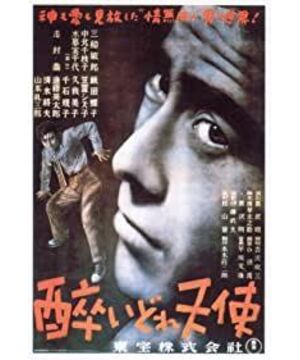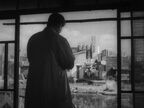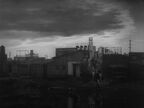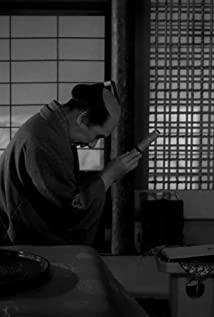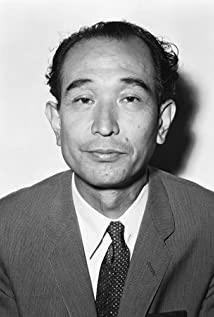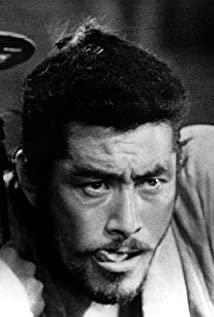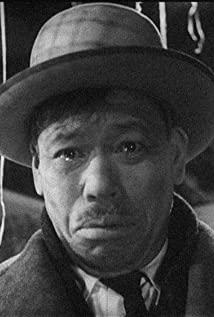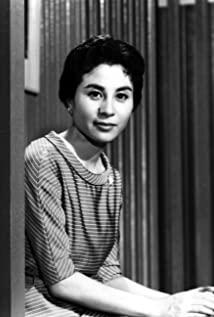Doctor and gangster
"Drunken Angel" sets the identities of two main characters of doctor and gangster, and the meanings are quite strong. The origin of the story is that Matsunaga, a small gang leader, went to Dr. Sanada's clinic for an operation, and then found out that he had tuberculosis. The doctor told him to abstain from alcohol, and Matsunaga of the yakuza slowly changed from resisting treatment to accepting treatment. However, when Matsunaga's gang leader was released from prison and returned to Matsunaga's life, everything spiraled in an unstoppable direction.
Doctor Sanada's encounters with the yakuza Matsunaga show some conflict each time. Among them, as a gangster, Matsunaga's own existence implies a set of hegemonic language and extrajudicial laws, including a kind of toughness and helplessness entangled in the big system and big rules. In the several conflicts between the two, Matsunaga first refused to admit that he was sick because of his blindness; later, he resisted the doctor's orders because of the self-esteem of the gangster and was unwilling to obey the orders of others; at the same time, he also had the desire to survive the treatment of the disease and the fear of destruction and fear. Confused with death, he intends to dispel the real fear in his heart through hard resistance, and preserve the pride of his life through self-sacrifice. In the end, although he started treatment, the hidden dangers that had already begun to take effect prevented him from escaping, which made him choose to end all the problems he faced in the rules and morality of the gangster system in a kind of habitual loyalty and bravery. The blind and collective loyalty, self-sacrifice, and dignity and honor are all metaphors for the pursuit of values that Japan upheld during the period of militarism. The hesitation, extremism, and even betrayal that Matsunaga himself experienced also represented the collective emotions that Japan in the first half of the 20th century had never faced in a prosperous and expansive process. And all of this continued to move forward under the unstoppable rolling wheels, and it was not until the emergency stop after the war that it could be confronted and healed.
Opposite to Matsunaga, who foreshadows Japan, is the identity of Dr. Sanada. Whether it is a doctor's body or a doctor's heart, the doctor's metaphor has two main functions, one is to constantly find out the lesions for the patient, and the other is to provide the patient with treatment methods. In the face of the cause, the doctor must hit the nail on the head and take the lead. Whether it is the patient's body trauma from bullets, lung infection, or psychological denial of illness and resistance to treatment, the doctor pointed out the patient's rogue-like lifestyle, as well as his inner cowardice, extreme and irrational. At the same time, as the only person capable of knowing the solution, the doctor is the only person who can give guidance in a difficult situation. A filthy quagmire, featured several times in the film, is located just outside the doctor's clinic. The quagmire is also seen as a symbol of postwar Japan's decadence. The patients who came in and out of the doctor's clinic included both female students and members of the gang. This alludes to a new generation of young people (with few pre-war memories and frustrations with the ups and downs of nations) and middle-aged people with historical memories (who are weather-beaten and helpless in the various systems that depend on their existence) . They crossed the quagmire and came to the clinic, showing that whether they are young or not, ignorant or not, they are still in and facing a country that is waiting to be rebuilt, and yearn for a redemption for the existence of tomorrow. A doctor who accompanies this quagmire every day must not only support the hope of survival of the new generation who have not experienced the world, but also find the possibility of continuing to live for the people who are riddled with holes and distorted by the great times. . The movie sets Matsunaga as a patient and Sanada as a doctor, which itself contains Akira Kurosawa's special intention to seek a way out for the dead end of post-war Japan.
Forgotten Melody and Killing Song
In this film, the guitar music is a constant flickering presence throughout. The film begins with a guitar piece rich in Japanese folk minor, and then the visual curtain is lifted: under the modern street lights and roads, people with a rural atmosphere can also be seen enjoying the coolness and chatting at night. The Japanese-style guitar minor comes from the idle play of an unknown man by the quagmire, almost every night. And what this Western musical instrument is, it doesn't matter to the people who live here. It seems that it doesn't matter whether it is an electric light, a road, a garbage disposal station, or a sewer system, and it doesn't matter to the lives of ordinary people. In this land where life is still as usual, the changes brought about by westernization, like this Japanese-style minor guitar piece, although different, will gradually dissolve into people's habits. And the only time in the whole movie that the tone changes is when Matsunaga's gang boss comes out of prison and comes to this quagmire. He grabbed the guitar involuntarily and played a completely different tune. And the unknown man who used to play the guitar recognized his eldest brother involuntarily after a song and asked what song it was. At this point, the gang boss responded that this was a song of murder. After this key shift, the minor tunes that rose at the same time as the quiet night were no longer audible, replaced by a few moments when the mob boss played the song of murder complacently, and the dramatic scenes that continued to evolve and intensified.
Hiroshige's Hundred Views of Edo in the 1850s, Kiyochika's Tokyo images in the 1870s and 80s, and Koizumi's Tokyo city prints in the 1930s left us with visual clues of the Westernization and modernization of Japanese cities. In the eyes of Japanese print artists, Hiroshige's Edo imagery is still an ancient city with natural landscapes woven with rivers and waterways, and citizens dotted among them. In the Tokyo City of Kiyochika during the Meiji period, railways and street lamps have appeared under the trend of restoration, and long shadows are cast by telephone poles and people wearing kimonos in the sunset. The idyllic freshness of the city, mixed with the prosperity of the European post-industrial era of enlightenment, comes to the fore. In the 1920s and 1930s before the war, Tokyo, which experienced the Great Kanto Earthquake in 1923, rebuilt the city and triggered a frantic modernization boom. Koizumi's urban landscape documents the rapid rise of public green spaces and monumental parks that represent civil rights, dance halls and movie theaters that represent modern entertainment, and sharper nighttime lights. The flattering glorified depiction of a rebuilt city, on the one hand, highlights the fact that after decades of catching up and imitating the West, Tokyo has really transformed itself into a modern city; As for the enthusiasm for speed, technology and innovation, the destructive disasters from nature completely erased the doubts about the westernization and modernization of Tokyo. The construction and eulogy of the new city have become the actual embodiment of resisting the forces of nature and burying the ruins of the past. And this makeover also brought a variational drive to Japan.
In Akira Kurosawa's films, it is the same Western guitar, how to use it, and what kind of tune is played by what kind of person, alludes to the different fates brought by the origin of Western learning and modernization to Japan. In the past history of Japan's fusion of foreign learning, it was often the overlapping and fighting of several powers and momentums that led to the true localization of foreign culture. For example, the tea ceremony in Japan was originally prosperous in high-level shogunate activities, and the tea utensils were mostly made of imported Chinese porcelain due to the special rights of the samurai class. But the real establishment of the tea ceremony with Hideyoshi and Seno Rikyo as the dividing line was when the political power represented by samurai and the economic power represented by merchants collided. The samurai favored Chinese tastes, controlled the material flow between countries, and showed their power through tea activities; while the merchants nurtured their own cultural tastes by supporting local craftsmanship, and by perfecting the integration of local cultural resources, they resisted the culture from the upper power. Take control. As a result, the local artistic language and aesthetic taste can be tempered and blossomed in the real social environment. In Japan's traditional social structure, the political power from the samurai class, the religious power from temples and shrines, the cultural power from the imperial palace, and the economic power from the folk merchants, their separation and mutual ebb and flow state are all vomiting for Japan. Accept foreign learning and guard the Quartet. Since the Meiji Restoration, the decentralization of the local samurai daimyo has been transformed into the unified jurisdiction of the central government, the royal family has become another national symbol, the removal of the distinction between the industrial and commercial hierarchies of scholars and farmers, and the rise of civilian culture, traditional religious beliefs are facing the challenges of modern life. Decline, as well as the corporatization and corporatization of economic power, are reshuffling the organic framework for Japan itself to welcome foreign learning. During the Meiji period, faced with the sudden advent of Western learning, at least educational institutions still had disputes between Eastern and Western learning, and art schools also had a parallel structure of traditional workshop style and Western academic system. In pre-war Japan, although there is still a debate on whether Emperor Showa should be responsible for the war, and there are other voices in Japan other than militarism, we still need to know more before making judgments. But obviously, the different forces that were supposed to separate and examine each other were all placed in the same torrent.
This martial torrent is represented by the masculine, deviant, violent and self-contained gangsters in Akira Kurosawa's films. When the gangster sings the song of murder, this unsuspecting but unexpected moment is a force that dominates all other moments. This new song, in which every note is somewhat deviated, disrupts the original melody with accurate phonemes, while the harmless Japanese minor that once permeated people's lives by overlapping the old and the new begins to be shelved and forgotten. This moment of variation is the inducement for everything Kurosawa Akira chose to run away, and it is the starting point where things go uncontrollable. This initial focus is that the development and progress of the so-called Western learning has been taken away from people's lives and turned into other voices and tools, and people have forgotten their own voices.
The death of Matsunaga, the indignation of the doctor and the cry of the woman,
Matsunaga finally died as a patient. In the face of his tragic end, the attitude of the doctor and the woman reveals two different reactions that also relate to the path of postwar Japan. At the end of the movie, the doctor talks about Matsunaga's death with the hotel owner who has always liked Matsunaga. The two stood in front of the dull and still quagmire, and there was a floating puppet in the quagmire. The proprietress mentioned that before Matsunaga died, she persuaded him to leave the city and all disputes together. The two returned to her idyllic hometown together, recuperating, living, and leaving all the past behind to remain indifferent to the world. But in the end, she failed to stop Matsunaga's last fight and destruction. The doctor also mentioned that he had the same idea. Then, the woman covered her face and wept, while the doctor scolded sharply.
Women seek liberation from going to irrational men, and the way to liberate it is to go back to the past, to the place before the uncivilized and everything deteriorated. For Matsunaga, it was a rescue suggestion from others that existed in parallel with the doctor's treatment and denunciation. However, whether it's a thousand-year darkroom, a light illuminates; or the journey home from the Odyssey. A dark room that has been lit up will not cause the things in the room to cease to exist because of the demise of the lamp; the closed world that has been opened has itself collapsed the complete logic that once had nothing else, and cannot return to an unknown place. and never opened state. Facing the tragic setbacks in Japan's modern history, the reaction to femininity is a kind of nostalgic, escaping and emotional advice, a romantic, ideal and fragile fantasy escape from escaping back to the land of gentleness, which happens directly in the film's narrative line. The final cry of the proprietress in the middle is a cathartic cry, which more directly shows the powerlessness and inaction of this liberation. The doctor has never been hesitant to be nostalgic, but he didn't tell Matsunaga so after all.
Japan's Meiji Restoration directly pointed to the path of defeat in World War II, which was a process in which the original world was constantly shattered, high-spirited and dark, self-defense and aggression. At first, the logic of the anti-Japanese faction to promote Western learning was to consider that the continuous influx of Westerners was because the Japanese were different from them. The achievements made by beginners of Western learning have enabled Japan to gain the world's vision first in the historically consistent category of East Asian cultural exchanges between China, Japan, and Korea, and to integrate the long-standing intercommunication between Japanese culture and Sinology culture into the new In the global era, it is transformed into a communion between Asian and Western cultures. As a result, the further pursuit of technological innovation and social change, the pursuit of national strength and the stability of existing development, is also shrouded in the fear of being invaded again, and the desire to reproduce and assimilate other countries. Colonial desire. Interpreted in a modern context, Katsushika Hokusai's ukiyo-e "In the Great Waves of Kanagawa" has become the best interpretation of Japan's anxiety and struggles in the face of the ocean and every peripheral world before the founding of the country. Before the Meiji period, Japan was not without contacts with the West. Lan Xue prospered due to the Dutch nautical trade, Nanban screen paintings born from Portuguese overseas exploration, and even the aggressive threat brought by the Mongols from the Asian continent, until the US Navy Commodore Perry led 6 black ships to sail. Every scene is linked to the troubled history of the Japanese rulers. Although the Tokugawa shogunate implemented a policy of closing the country, with the advent of the era of great voyages, exotic sails appeared on the sea level, and the ocean that wrapped the Japanese islands and isolated them from the world was no longer a natural barrier. Those in power delivered a turbulent message. Correspondingly, in the ukiyo-e that circulated in the market as a popular culture, Katsushika Hokusai painted a monstrous wave in a rotating composition. The background behind the wave is the unmoving Mount Fuji in the distance, while people are far away. In the foreground of the sacred mountain, which represents the immutability and eternity, drifting under the huge waves, facing the unknown destiny.
In the movie, the doctor knows that Matsunaga's tough exterior hides his inner cowardice and unease, and the absurd logic of his resistance to disease extends to his resistance to healing. And the way for Matsunaga to be healed is not to escape all disputes and return to the countryside, just as it is impossible for a modernized Japan to wipe out all the villages and old institutions that return to tradition, but to punish the gang leader to remove the logic of power, and to arouse Matsunaga's sober self-cherishing. The heart is the real cure. In the first contact, it was very foreshadowing. Before the doctor operated on Matsunaga, he opened the door of the clinic. The door slowly closed with a creak, opened again, closed again, and went back and forth several times. This seems to imply that the doctor tried to open up a way of healing for Matsunaga, but it took several rounds to be slightly effective. In the end, the doctor faced the death of Matsunaga. His actions resulting from this tragedy were to lift the stone beside the swamp, throw it into a pool of stagnant water, and then rebuke: the logic of these gangsters is always in the end It's time to make the wrong choices, so they're so pointless and senseless indiscriminately hurting innocents. Unlike women who indulge in fanciful relief, doctors do not make assumptions about alternative possibilities in the past. The doctor looks directly at all the facts, including all the sad and hateful things about the patient, including the direct connection between the inevitable and the past that has happened in the present, so that this road that may have a beginning but is far from over starts from the present moment. , and continue to walk with a healthy attitude.
Conclusion: The first song and the end of the rational life
movie, as a new generation of young people's illness gradually improved and subsided, and the people who shared the death of Matsunaga said goodbye, how can the real post-war Japan be like the end of the movie As ideal and full of dawn? The doctor finally talked to the female student about treating the disease, admonished the female student to live rationally, and then pulled up the female student and hummed a small tune.
This minor tune is a very imaginative and meaningful lens-style condensed sentence, "We stand at a higher place and see a farther world." This scene is the beginning of all modern Japanese history. And standing on a land that still has lasting virtues instead of struggling in the waves of fate, looking at a new field that can be explored, with high spirits and vigor, that is the moment when you open your eyes and see the world. Should you remember? Forgotten original intention.
At the end of the movie, after experiencing the destruction of a certain life desire of a generation, this little tune hummed by the doctor is undoubtedly a good medicine for those who are still alive in a puddle of mud. After going through many twists and turns and going astray, although people cannot return to the past that has not happened, it is still worth remembering that before everything is not diseased, the first step that can be taken purely, what should have been energy, and longing again. At the same time, the female student, who also suffers from tuberculosis, also represents someone who is connected to the past rather than a new, unaware, and untouched person. This more aptly shows the state of post-war Japan, because no individual belonging to the country, not even a nascent individual, can completely escape the influence of the logic of the country's evolution and the fact that it happened. And the way to find a break in the vicious circle and find life in a pool of stagnant water is precisely the doctor's warning to the female student and the reason why the female student can cure the disease: face the problem, humility, self-discipline, and sobriety . That is, live rationally.
View more about Drunken Angel reviews


